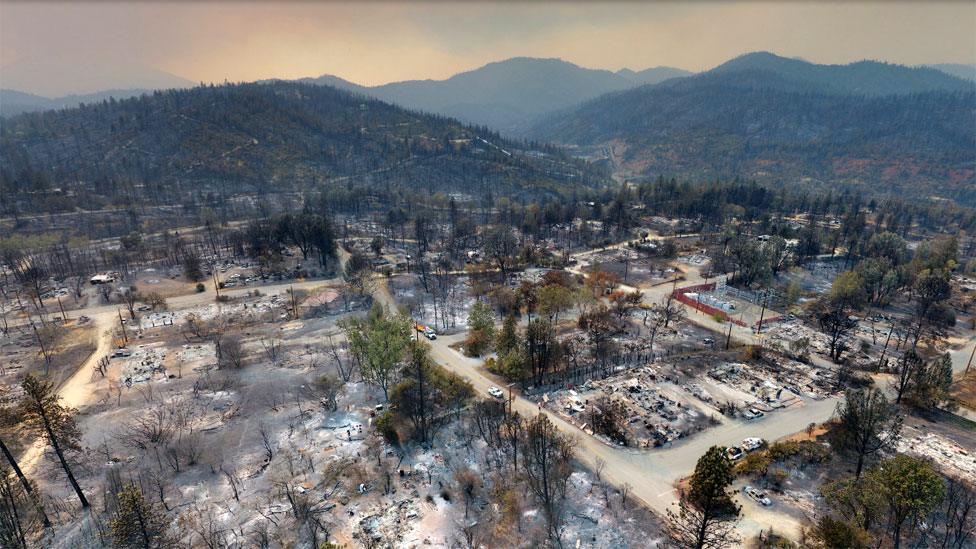California fires: Firefighters hold containment lines in north
- Published

Another blaze near Los Angeles, the Peak Fire, is now out
Crews battling a deadly wildfire in northern California have managed to hold their containment lines, the state fire service says.
They have contained 30% of the fire, stretching over 125,000 acres (50,500 ha), but do not expect to contain it fully until the end of the month.
In the ruined town of Paradise, Butte County, forensics teams are continuing to search for human remains.
The official death toll has risen to 48, with dozens of people missing.
Another blaze in the south of the state, the Woolsey Fire, has killed at least two people, damaging beach resorts including Malibu, a favourite with the rich and famous.
California wildfires continue to rage
It is still burning across more than 96,000 acres but is 35% contained, the state fire service tweeted.
Allow X content?
This article contains content provided by X. We ask for your permission before anything is loaded, as they may be using cookies and other technologies. You may want to read X’s cookie policy, external and privacy policy, external before accepting. To view this content choose ‘accept and continue’.

Another, smaller blaze, the Hill Fire, is 90% contained in Ventura County, north of Los Angeles.
President Donald Trump has paid tribute to emergency crews' "incredible courage in the face of danger".
"We mourn the lives of those lost and we pray for the victims and there were more victims than anybody would ever think possible," he said.

A county in shock
By Dave Lee, BBC News, Paradise, northern California
It's five days since the Camp Fire destroyed this town. Power lines are strewn across the streets, cars melted into their driveways.

A California license plate in the ashes of Paradise
There are clues to the panic that must have swept through what was a charming town. A garden table, with food-serving tongs at the ready - both now fused together by the extreme heat.
In nearby Chico, on the site of a fairground, impressive emergency planning is in action: last night's shift of firefighters sleep in a warehouse, while today's get their briefings.
But being prepared for the worst doesn't make it any less traumatic. This is a county in shock - at lives, homes and livelihoods lost. And the knowledge that, in California, this will happen again.

How great is the challenge in Butte County?
Convoys of fire engines could be seen rumbling through the charred ruins of the town on Tuesday, Reuters news agency reports, as crews headed out to fight the deadliest wildfire in the state's history.
Workers used chainsaws to clear downed power lines and other obstacles from the streets.
At least 6,607 residences have been destroyed in the county along with 1,032 commercial and other structures.
"Thirty percent [containment] is kind of where we're getting close to rounding the corner," said Cal Fire spokeswoman Erica Bain.
Paradise resident Sorrell Bobrink describes 'apocalyptic' scenes
"When we're in the 30s and 40s, they're getting a good handle on it. By the end of this week I'd like to see that number up to 40, maybe 45."
Another Cal Fire representative, Scott McLean, said firefighters were now more optimistic because of changing weather conditions.
What is being done to find the missing?
Officials warn that finding human remains could take weeks.
It was expected that 150 search-and-recovery personnel would arrive on Tuesday to reinforce 13 coroner-led recovery teams in the fire zone, Reuters reports.
Three portable morgue teams have been requested from the US military along with a "disaster mortuary" crew, cadaver dog units to locate human remains and three groups of forensic anthropologists.
Many victims in Paradise are believed to have been elderly residents or people with mobility issues who would have found evacuating more difficult.
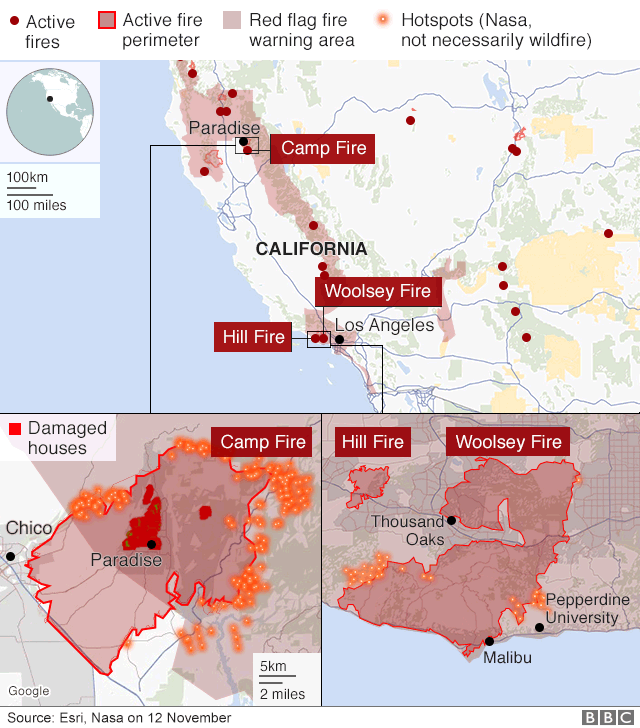
Why are the fires so bad?
Historically, California's "wildfire season" started in summer and ran into early autumn but experts have warned that the risk is now year-round.
With wildfires occurring across the globe, here are some of the techniques used to stop them
The California Public Utilities Commission is investigating what sparked the latest blazes - amid reports electrical companies may have suffered malfunctions near the sources shortly before the fires began.
Low humidity, warm Santa Ana winds, and dry ground after a rain-free month have produced a prime fire-spreading environment.
The state's 40-million-strong population also helps explain the fires' deadliness. That number is almost double what it was in the 1970s, and people are living closer to at-risk forest areas.
Citing the role of a warming climate, California Governor Jerry Brown declared: "This is not the new normal, this is the new abnormal."


- Published12 November 2018
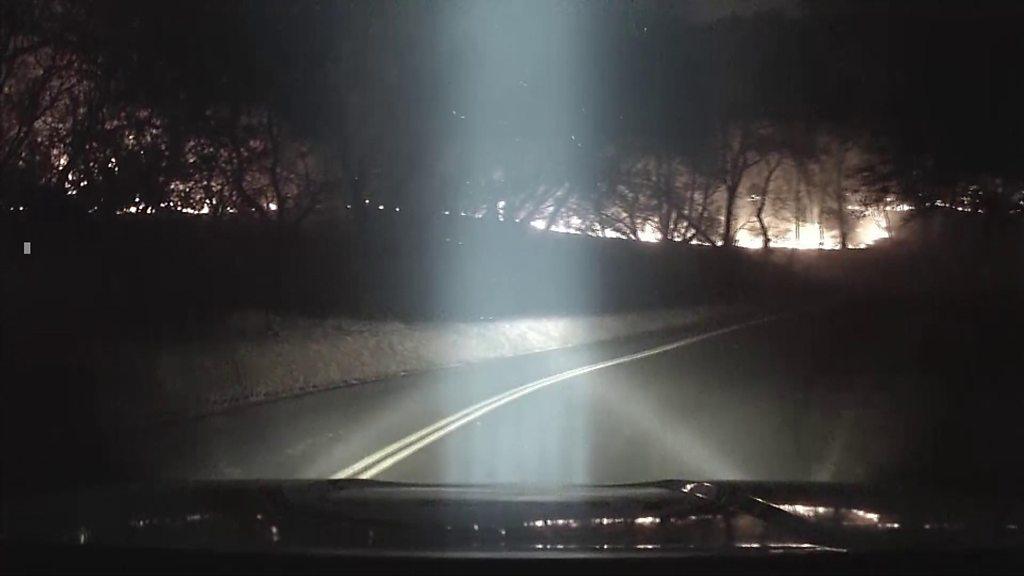
- Published13 November 2018
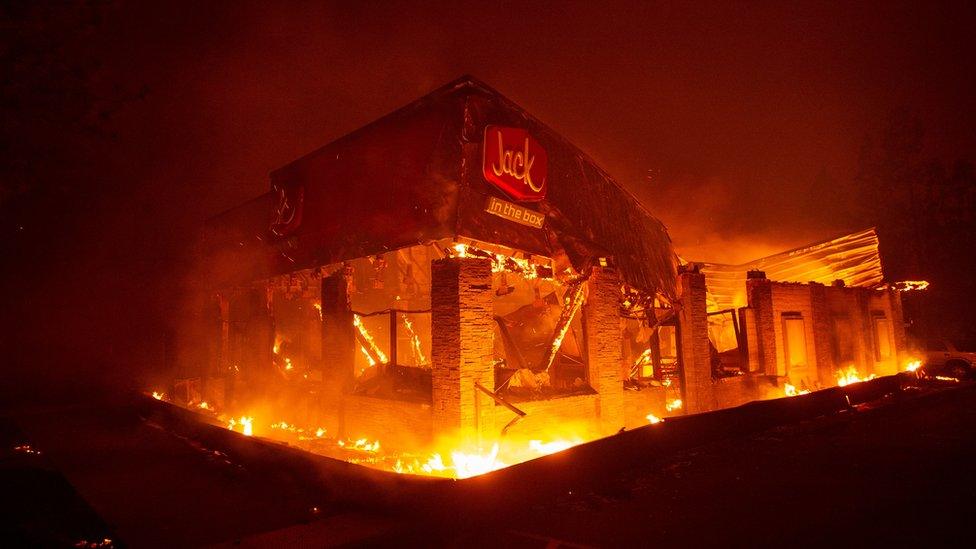
- Published12 November 2018

- Published10 November 2018
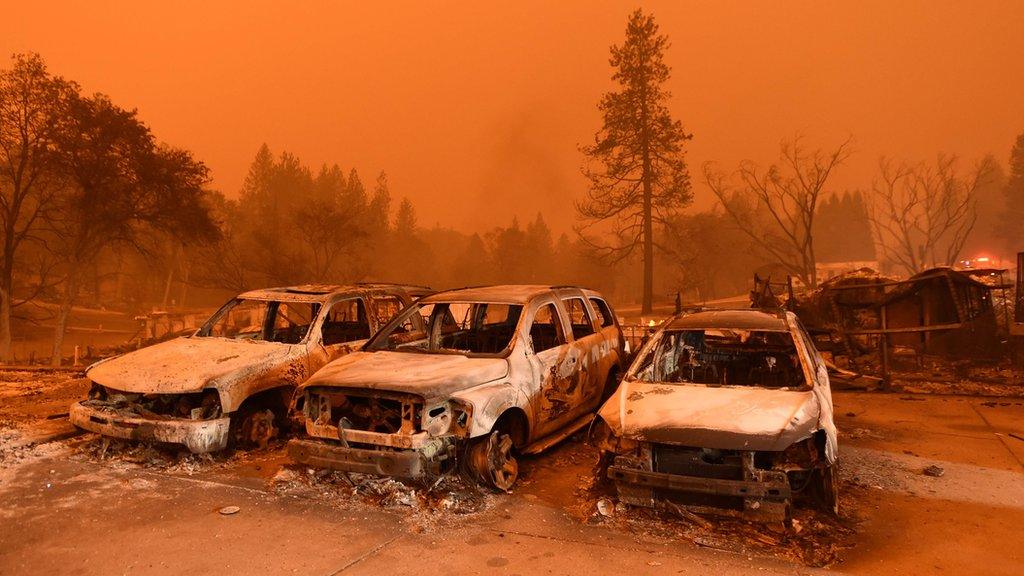
- Published13 October 2017

- Published12 November 2018

- Published10 November 2018
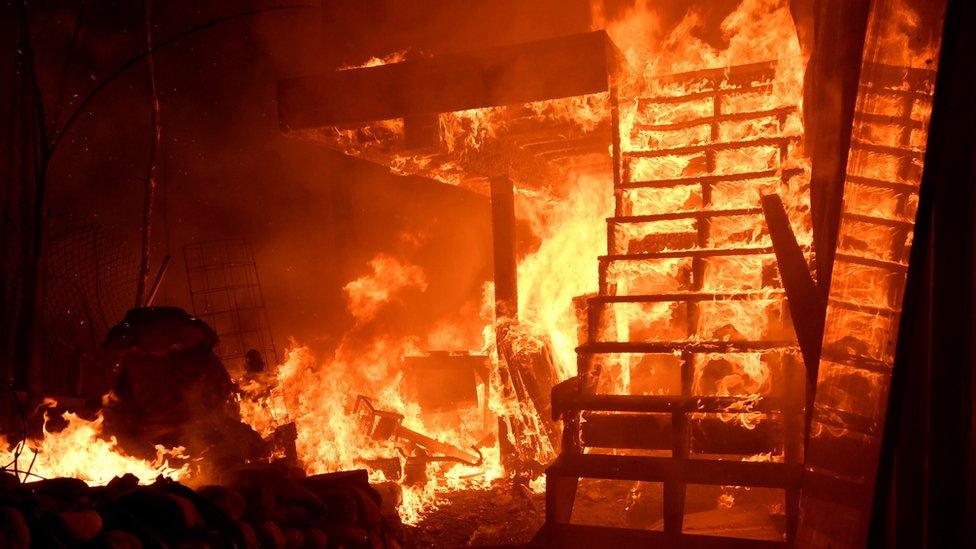
- Published12 November 2018
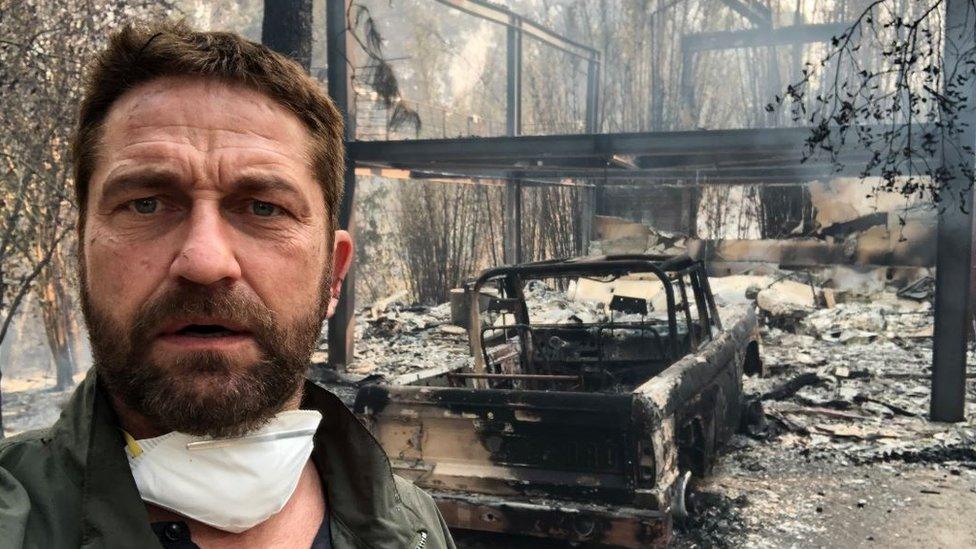
- Published13 November 2018
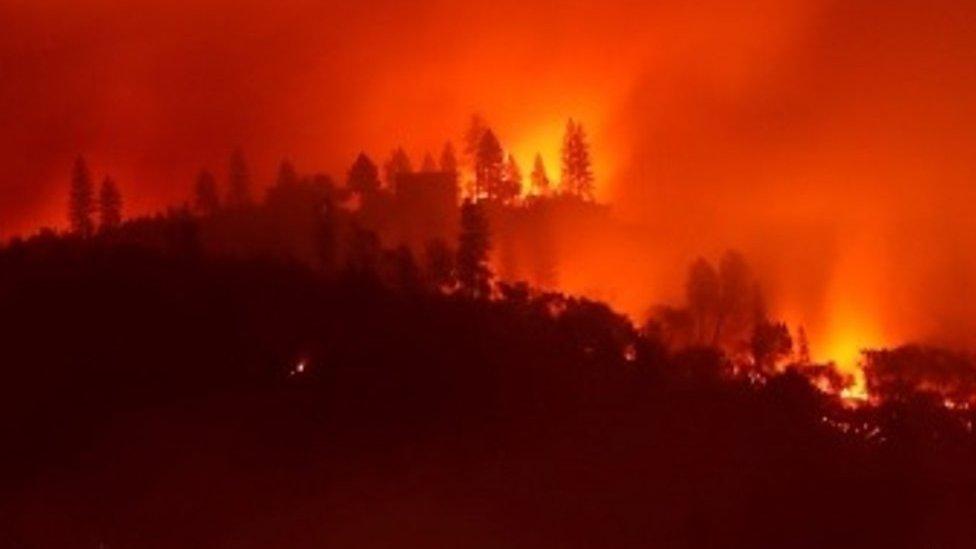
- Published12 November 2018
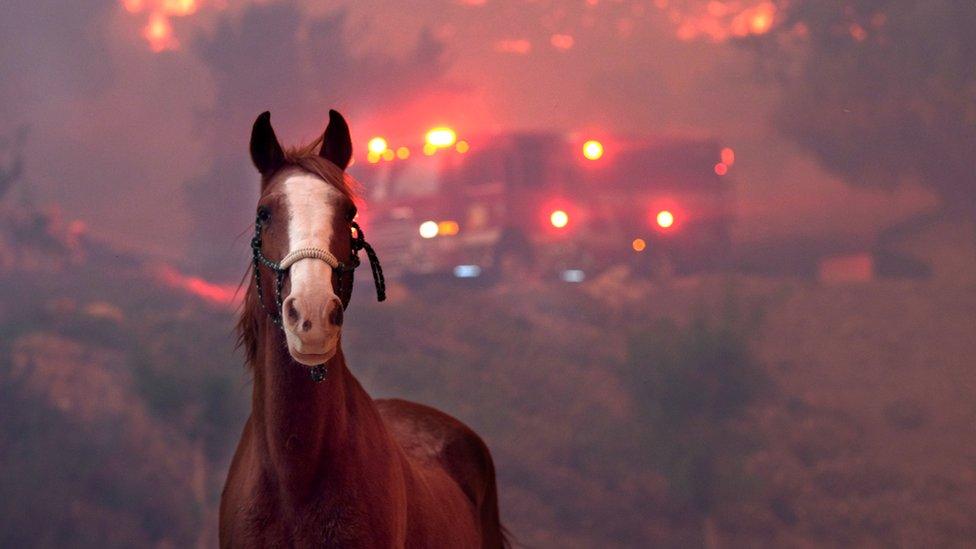
- Published7 August 2018
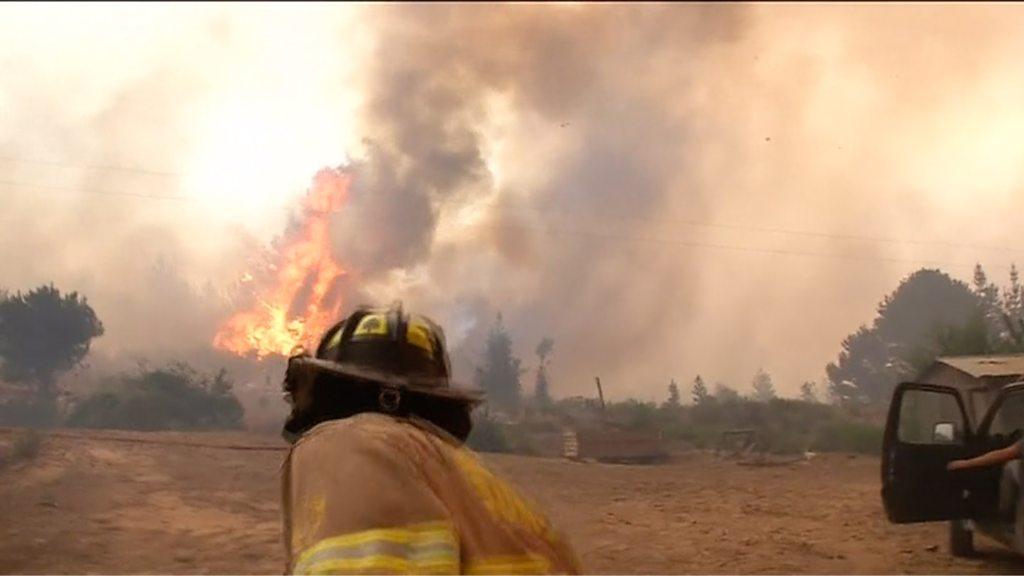
- Published13 December 2017
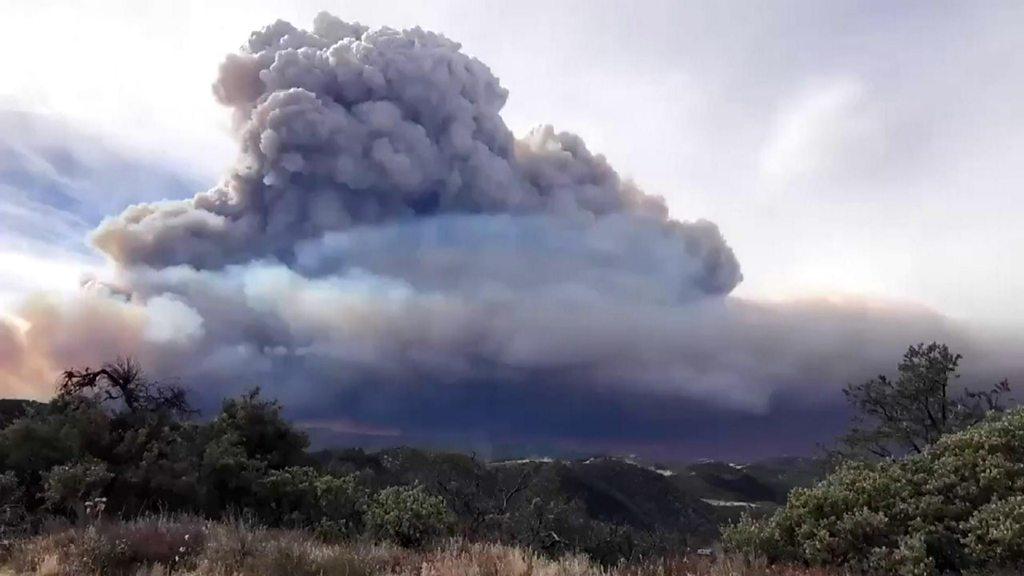
- Published9 August 2018
